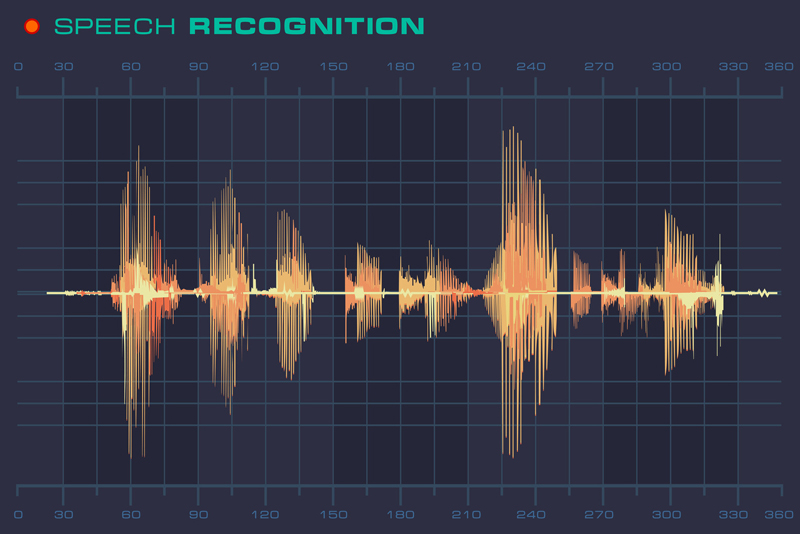Speech recognition or voice recognition software converts spoken words into digital text. As a provider of general transcription services, we are often approached for error correction and interpretation of words that are unrecognized or misrecognized in documents created by speech recognition technology (SRT). There’s no denying that speech recognition software has entered our daily lives in many ways. Every day, voice-controlled digital assistants like Alexa and Siri make their presence felt in smartphones, computers, smartwatches, cars, and homes. According to recent reports, the underlying technology in speech recognition could play a significant role in expanding learning opportunities, including to homes as schools remain in lockdown mode.
Speech recognition technologies for learning may benefit people with:
- Learning disabilities, including dyslexia and dysgraphia
- Repetitive strain injuries like carpal tunnel syndrome, which makes using a computer keyboard difficult
- Poor or limited motor skills
- Vision problems
- Physical disabilities
- Limited English Language
Speech recognition supports learning in various ways:
- Supports language learning: Learning a language means learning how to use it. Errors in spoken language relate to mispronounced phones, spelling different from pronunciation, incorrectly placed stress, intonations, grammar errors and lexical errors in speech, and comprehension problems caused by fast speech tempo or by differences between the spelling and the pronunciation in some words. SRT identifies the words pronounced while they are spoken, and provides real-time feedback. With SRT, students who are English Language Learners or are learning a second language can practice pronunciation and oral fluency without feeling embarrassed.
- Ease of use: Most students find talking to a PC or Mac far easier than typing and using the keyboard and mouse. Whether they have assistive needs or not, many find that the process of typing on the keyboard inhibits thoughts and ideas. With SRT, they can focus on their thoughts and speak freely, and get them documented, all by just speaking. SRT leaves more time for learning or solving a problem.
- Reduces difficulties faced with writing tasks: Speech recognition used along with word processors can eliminate some of the problems that students face with writing or transcribing thoughts while brainstorming (www.ldonline.org). Students, especially those with learning disabilities, tend to leave out words if they are unsure about the correct spelling. This can lead to missing the essentials or writing that is short and does not reflect the student’s true abilities. In conjunction with word processor abilities, SRT allows students to express their thoughts in writing without worrying about these issues.
- Improves quality of writing: In students with disabilities, SRT can encourage better quality writing. Studies have shown that input via speech is less challenging and leads to more thoughtful and deliberate writing, allowing students to generate more meaningful papers.
- Removes physical barriers to writing: Being able to enter data using your voice removes physical barriers to writing and typing. Rather than using a keyboard and mouse, SRT allows the student to speak into the microphone and instruct the computer to perform tasks such as opening documents, saving/deleting them, etc., as well as write text in a Word document. This is especially beneficial for students with motor skill limitations, physical disabilities, blindness/low vision, or other difficulties and allows them to better participate in classroom activities.
- Improves access to information: SRT removes communication barriers for students who have dyslexia. Along with other assistive aids like document readers and screen readers, SRT provides these students to access to information sharing and publishing on desktop computers, laptops and other connected devices, on par with other students.
Need to Customize Voice Tech for Children
Since applicability is different, technology developers need to develop the algorithms that inform educational tools differently from those that respond to queries posed by general consumers, notes a recent report in EdSurge. The article discusses the challenges associated with this:
- Collection of accurate children’s speech data across different regions and dialects
- Children have different physical vocal tracks and spontaneous speaking behaviors
- Fine tuning systems to recognize the myriad peculiarities in how children speak in different scenarios
In the current scenario of school closures, speech technology can also extend educational opportunities to homes, especially for oral fluency exercises and other activities that typically require a teacher to be present, says Sunil Gunderia, chief strategy officer at Age of Learning (www.edsurge.com).
“In the environment we are now with the school closures, the ability to use something like speech recognition to serve as a way to provide kids meaningful feedback in terms of how they can improve in their reading, fluency or their pronunciation is really compelling,” he notes.
Voice recognition technology is already used every day by medical and law professionals to dictate notes and transcribe important information. However, the demand for accuracy in medical and legal documentation is driving the demand for digital transcription service. Transcription companies with extensive experience in the field can ensure meaningful transcription with maximum accuracy in minimum turnaround time.




